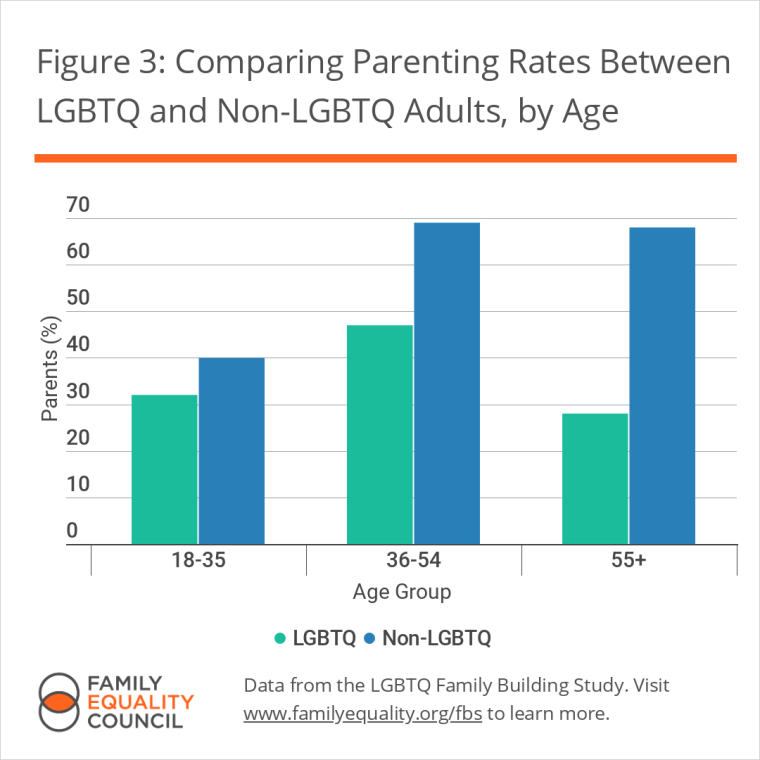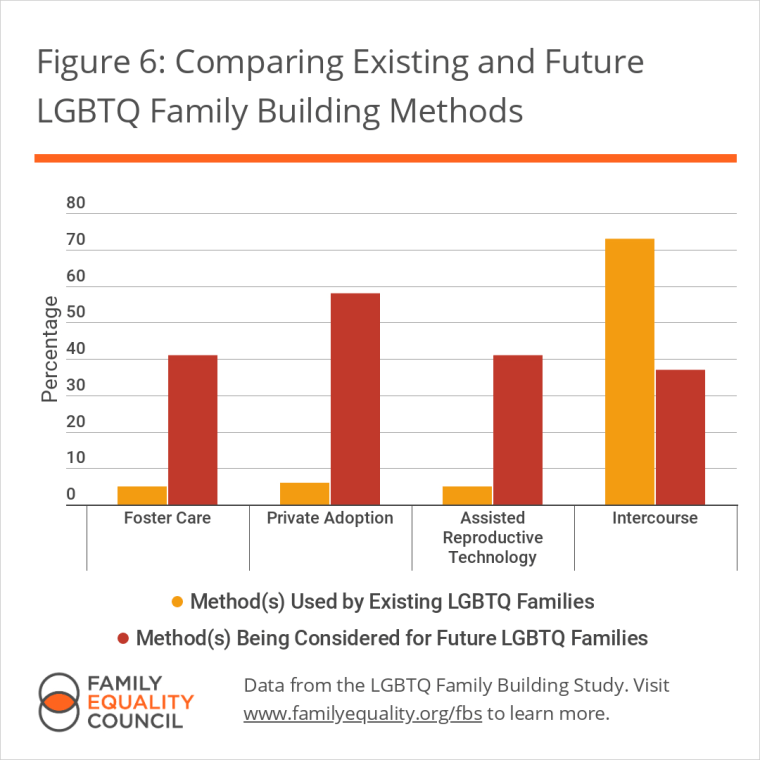An increasing number of lesbian, gay, bisexual, transgender and queer millennials are planning to have children, according to a recently released national online survey from the Family Equality Council, a nonprofit group that advocates for LGBTQ families.
The survey found that 63 percent of LGBTQ millennials ages 18 to 35 are considering expanding their families by becoming parents for the first time or by having more children.
“Most significantly, the data reveals dramatic differences in expectations around family building between LGBTQ millennials and older generations of LGBTQ people,” the report states.

The LGBTQ Family Building Survey, conducted by ORC International, polled more than 1,500 people, including LGBTQ and non-LGBTQ individuals who currently have or plan to have children. The report sheds light on how many LGBTQ people are interested in becoming parents, and how they plan to do so.
According to the survey, 48 percent of LGBTQ millennials are actively planning to grow their families compared to 55 percent of non-LGBTQ millennials — a gap that has significantly narrowed, according to Amanda Hopping-Winn, chief program officer for the Family Equality Council.
“The most surprising to me is that the percentage of LGBTQ millennials who are considering starting a family is very close to the percentage of non-LGBTQ millennials considering starting a family,” Hopping-Winn told NBC News.
Hopping-Winn attributed the change to several key factors, including the 2015 Supreme Court ruling in Obergefell v. Hodges legalizing same-sex marriage, increasing public acceptance — despite a recent uptick in laws that create roadblocks for LGBTQ families, more LGBTQ individuals coming out of the closet and planning their families at younger ages, and advancements in assisted reproductive technology, such as in vitro fertilization and surrogacy, which makes it possible for people to have children through nontraditional methods. The report found that 63 percent of LGBTQ families expect to use ART, foster care or adoption to become parents.
Also, fertility providers have become more accepting and sensitive to the needs of LGBTQ families over the last decade, which has added to the shift, Hopping-Winn explained.
“Largely, [fertility] providers are now realizing we’re a population they should serve, and so they have shifted gears a little bit to become more LGBTQ aware and sensitive and inclusive,” Hopping-Winn said. “And the [ART] technology is just in a more advanced stage than it was several decades ago.”

While more LGBTQ people are having children, either through traditional methods, ART or adoption, the population continues to face barriers.
The report states that 73 percent of LGBTQ respondents who were already parents reported having children through intercourse, meaning they had conceived through an opposite-sex partnership at one time, or that they were transgender and so could conceive through traditional means. But the survey found that fewer LGBTQ people expect to rely on intercourse to become parents. Just 37 percent plan to use it as a way to have children in the future, which means they will rely on either ART or adoption to do so.
“For LGBTQ people, the process of becoming a parent is far more complex and challenging than for non-LGBTQ people,” the report states. “While family building via intercourse remains an option for some in the LGBTQ community, particularly bisexual people in different-sex relationships and couples where one or more partner identifies as transgender, it is far more common for those in LGBTQ relationships not to have the components needed for biological conception (eggs, sperm, and a uterus), in comparison to non-LGBTQ relationships.”
In 10 states (Alabama, Kansas, Michigan, Mississippi, North Dakota, Oklahoma, South Carolina, South Dakota, Texas and Virginia), laws still exist that make it difficult for same-sex couples to foster and adopt, and the costs of starting a family can be steep — from having to hire lawyers for adoptions, to the significant out-of-pocket expenses many same-sex couples can pay when medical insurance does not cover their fertility needs, which is often, according to Hopping-Winn.
“These systems were not made for us,” she explained. “They’re starting to accommodate us, but they weren’t made for us.”

Family building providers should get ready for an increase in the number of LGBTQ couples seeking care, according to the survey. While the current percentage of LGBTQ people who used ART to have children is only around five percent, 40 percent of them are currently considering it, the survey found.
Hopping-Winn said providers should work to make their services more LGBTQ friendly, noting that many LGBTQ people still face discrimination and a lack of understanding around their needs in medical settings, which can cause some to avoid seeking family planning assistance.
“We hear every day from people who email us that [providers] just don’t have the level of sensitivity to the LGBTQ population that we need,” she said.
But Hopping-Winn said the survey findings are largely optimistic for LGBTQ people who hope to become parents.
“The fact that we can now at very similar rates to the non-LGBTQ population consider parenthood tells me that the landscape has shifted, especially for millennials in how they feel the world accepts them in who they are,” Hopping-Winn said.


